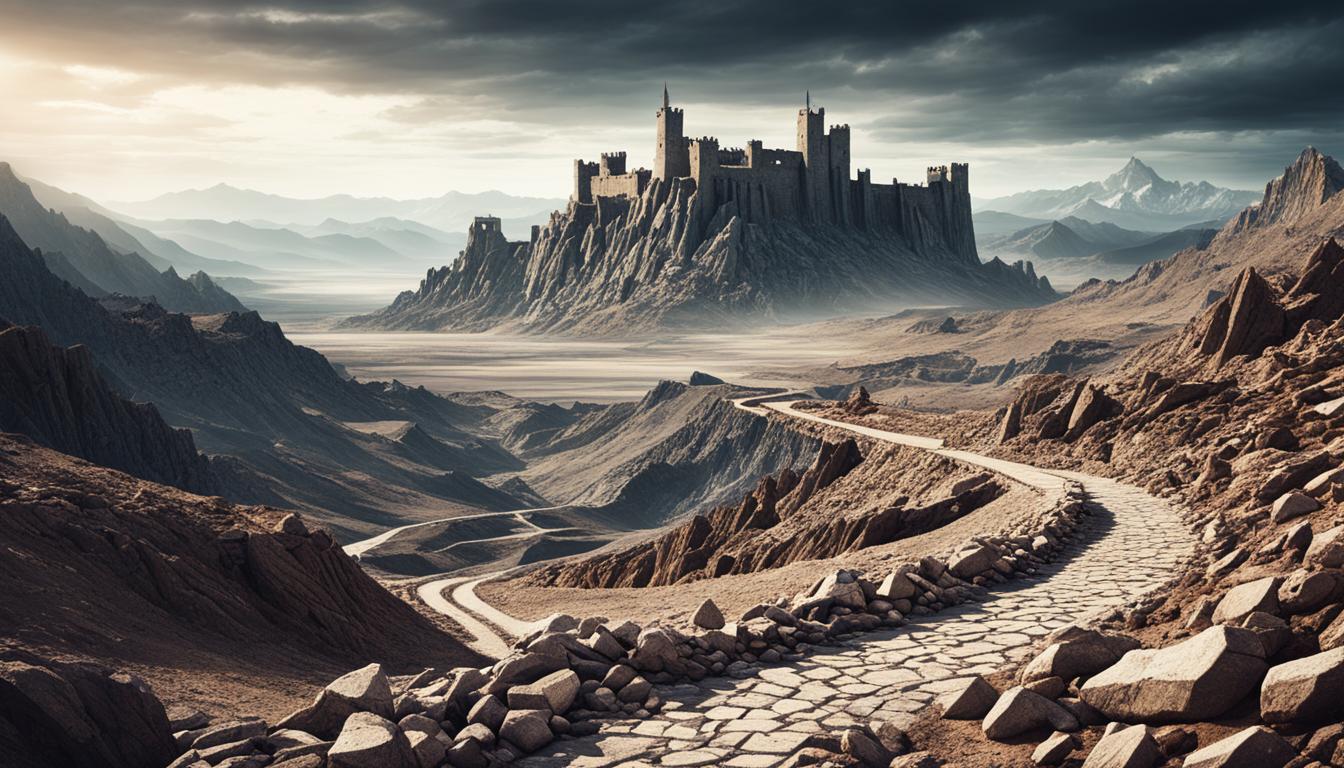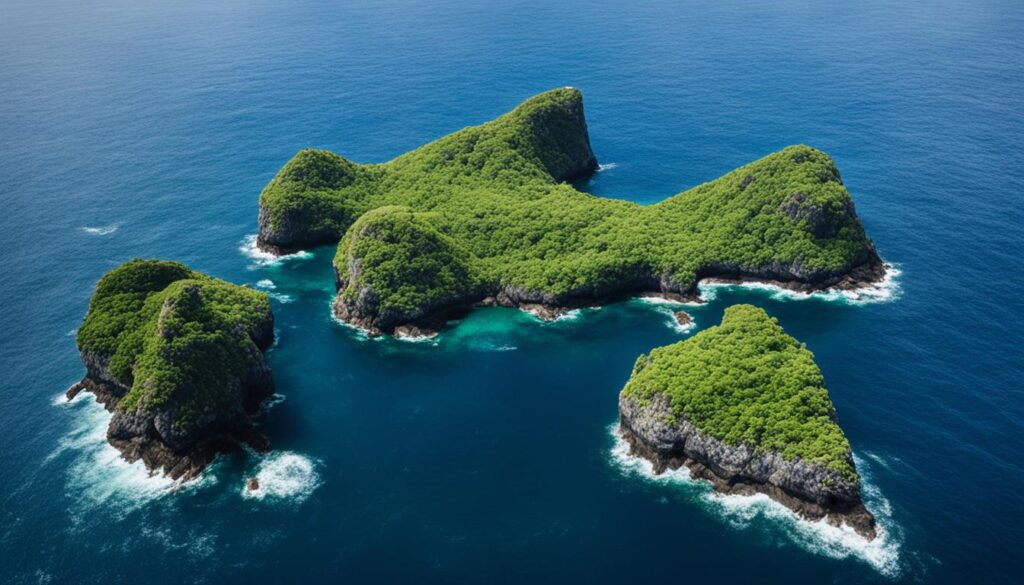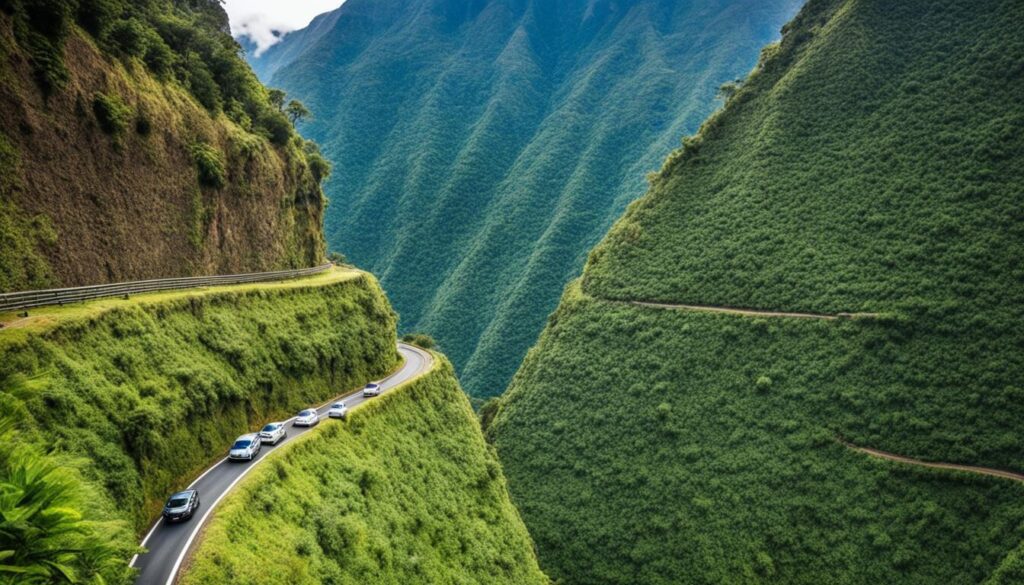
World’s Most Dangerous Places Unveiled
Did you know that South Sudan, Afghanistan, Syria, Libya, and Somalia are among the most dangerous countries to visit in 2024?
A study by International SOS shows these places are very risky for travelers. Conflicts, medical risks, and security threats are big concerns. Climate change affects these areas too.
Europe houses the safest countries. But knowing the most dangerous places in the world is crucial. This knowledge is vital whether you’re looking for thrills or traveling for work. Being aware can keep you safe.
We’re going to look at some of the deadliest places on Earth. You’ll learn about extreme travel spots and dangerous tourist locations. This article puts a spotlight on the dangers of visiting these areas.
The Danakil Desert: A Volcanic Inferno
The Danakil Desert in East Africa is a hot spot for daring travelers. But beware, it is full of dangers due to its extreme heat and volcanic spots. It’s not easy to get to, making it a risky trip for anyone.
Here, the air is scorching, hardly ever dropping below 50 degrees Celsius. This harsh climate, mixed with toxic sulfur gases, makes it a dangerous place. These gases can harm anyone who dares to explore this area.
The extreme heat in the Danakil Desert can quickly become a serious threat. It can lead to heat exhaustion and dehydration, which are harmful. These conditions can be very dangerous.
Going into the Danakil Desert needs lots of planning. You must have the right gear, like breathable clothes, hats, sunscreen, and lots of water. This helps avoid sickness from the heat.
The Danakil Desert isn’t just known for its extreme heat. It also has harmful gases from volcanoes. These gases, such as hydrogen sulfide and sulfur dioxide, can make you sick and cause breathing issues.
What’s more, the Danakil Desert is hard to travel through. There’s not much help around in case of an emergency. The few roads and services make it tough to get help quickly.
Traveler’s Advisory: Tread with Caution
Seeing the Danakil Desert can be thrilling for adventure seekers. Yet, staying safe should always come first. Here are some key tips to keep in mind for a safe trip:
- Stay hydrated: Always have plenty of water on you and drink often to stay cool.
- Protective clothing: Dress in loose, airy outfits, wear a big hat, and don’t forget your sunscreen to protect against the sun.
- Respect local customs: Get to know and follow the local customs and respect the culture there.
- Travel with a reputable guide: Have a skilled guide by your side who knows the area well and can safely guide you.
- Inform others: Tell a friend or family member about your plans and keep them updated.
Remember, the Danakil Desert is incredibly beautiful, but it requires respect and thorough preparation.
Snake Island: Brazil’s Deadly Secret
Snake Island lies off Brazil’s coast and is full of danger. It’s also known as Ilha de Queimada Grande. The island has many venomous Bothrops snakes, with about five per square meter.
This makes it one of the world’s most perilous places. Only the bravest or most foolish would think of visiting. Bothrops snakes, also called Golden Lanceheads, are especially deadly. Their venom is fatal, and they are very aggressive.
To keep people safe, the Brazilian government does not allow anyone to visit Snake Island. This keeps both people and the island’s unique ecosystem safe. It’s a stunning, untouched place where beauty and danger exist together.

Snake Island’s Forbidden Nature
The sheer number of Bothrops snakes on Snake Island is alarming. Dr. Ana Silva points out how dangerous this makes the island. It’s a clear reason why no one is allowed to visit. This rule helps us respect nature and keep everyone safe.
– Dr. Ana Silva, Environmental Biologist
The Incredibly Deadly Bothrops Snakes
- Known as Golden Lanceheads.
- Highly venomous with potent neurotoxins.
- Aggressive in nature, capable of striking multiple times.
- Isolated population on Snake Island has evolved uniquely due to their isolation.
- A single bite from a Bothrops snake can cause organ failure, severe pain, and even death if left untreated.
Snake Island’s Forbidden Nature: By the Numbers
| Type of Data | Statistics |
|---|---|
| Total Area of Snake Island | 43 hectares |
| Estimated Number of Bothrops Snakes | Approximately 2,500 to 4,000 |
| Bothrops Snakes per Square Meter | Around 5 |
| Distance from Mainland Brazil | Approximately 33 kilometers |
| Prohibited Visitation | Since the late 1920s |
Death Road: Bolivia’s Deadly Path
The North Yungas Road, famously known as Death Road, is especially dangerous. It stretches 63 km and is among the world’s most perilous paths. Built by prisoners during the Chaco War, it snakes through mountains with many risks.
It’s a real challenge to travel on Death Road. You’ll face fog, landslides, and cliffs that are 2000 feet high. Because the road is so narrow, many have lost their lives here, including locals and daring tourists.
Improvements have been made, but traveling here still needs caution. Everyone must know about the dangers before visiting. It’s vital to drive carefully, watch for hazards, and follow all warnings.
If you’re visiting Bolivia, think about your safety first. Though Death Road is an adventure, the dangers are real. Look for safer paths to explore.

Survival Tips for Traveling on Death Road:
- Ensure your vehicle is in good condition and well-maintained before embarking on the road trip.
- Drive at a moderate speed, adhering to the designated limits and adjusting your speed to the road conditions.
- Keep a safe distance from vehicles ahead, as sudden stops or accidents may occur.
- Stay focused and avoid distractions, such as using your phone or engaging in excessive conversation.
- Use your headlights and hazard lights appropriately, especially when visibility is reduced.
- Be prepared for sudden weather changes and pack appropriate clothing and equipment.
- Consider hiring a local guide who is familiar with the road and can provide valuable insights and assistance.
“Traveling on Death Road is an exhilarating but potentially dangerous adventure. It is essential to prioritize safety and respect the inherent risks posed by this infamous road.” – Travel Safety Expert
| Risk Factors | Road Conditions | Accident Frequency |
|---|---|---|
| Extreme drops and cliffs | Narrow and challenging | Previously high, now reduced |
| Foggy conditions | Unpredictable weather | Caution advised |
| Landslides | Steep mountainous terrain | Proper safety measures necessary |
| Cascades and waterfalls | Slippery road surfaces | Increased awareness required |
Conclusion
Our world is full of wonders and stunning sights. But, we must also know about the risky spots. Places like the hot Danakil Desert, Snake Island with its venomous snakes, and Bolivia’s dangerous Death Road need care.
To have a safe trip to such places, being informed is key. Doing your homework, listening to experts, and following local rules matter. This helps in staying safe while exploring risky sites.
Safety should always come first, even when seeking adventure. Knowing the risks and being ready can reduce them. With the right precautions, you can enjoy memorable trips to even the most dangerous spots.
FAQ
Which countries are considered the most dangerous places to visit?
International SOS says South Sudan, Afghanistan, Syria, Libya, and Somalia are very risky. These countries face conflicts affecting visitors’ health and safety.
What makes the Danakil Desert one of the most dangerous places in the world?
The Danakil Desert in East Africa is extremely hot and full of dangerous gases. Temperatures rarely go below 50 degrees Celsius. The sulfur gases there can harm your health. It’s not a safe place without the right safety measures.
Why is Snake Island considered the most dangerous place in the world?
Off Brazil’s coast, Snake Island has lots of deadly Bothrops snakes. With five snakes per square meter, it’s highly dangerous. To keep people safe, Brazil doesn’t allow anyone to visit.
What makes Death Road in Bolivia so dangerous?
Death Road is famous for its danger. It has fog, landslides, and steep cliffs. These have caused many deaths. Travelers still need to be very careful on this road.
How can travelers ensure their safety when visiting dangerous places?
Know the risks before going to dangerous places. Learn about the dangers. Taking safety steps, like following local advice, choosing good tour guides, and having insurance is key.
Source Links
- https://www.independent.co.uk/travel/news-and-advice/most-dangerous-countries-2024-b2465858.html
- https://www.forbes.com/sites/laurabegleybloom/2018/09/27/revealed-the-15-most-dangerous-places-to-live/
- https://travel.earth/most-dangerous-places-in-the-world/

Leave a Reply